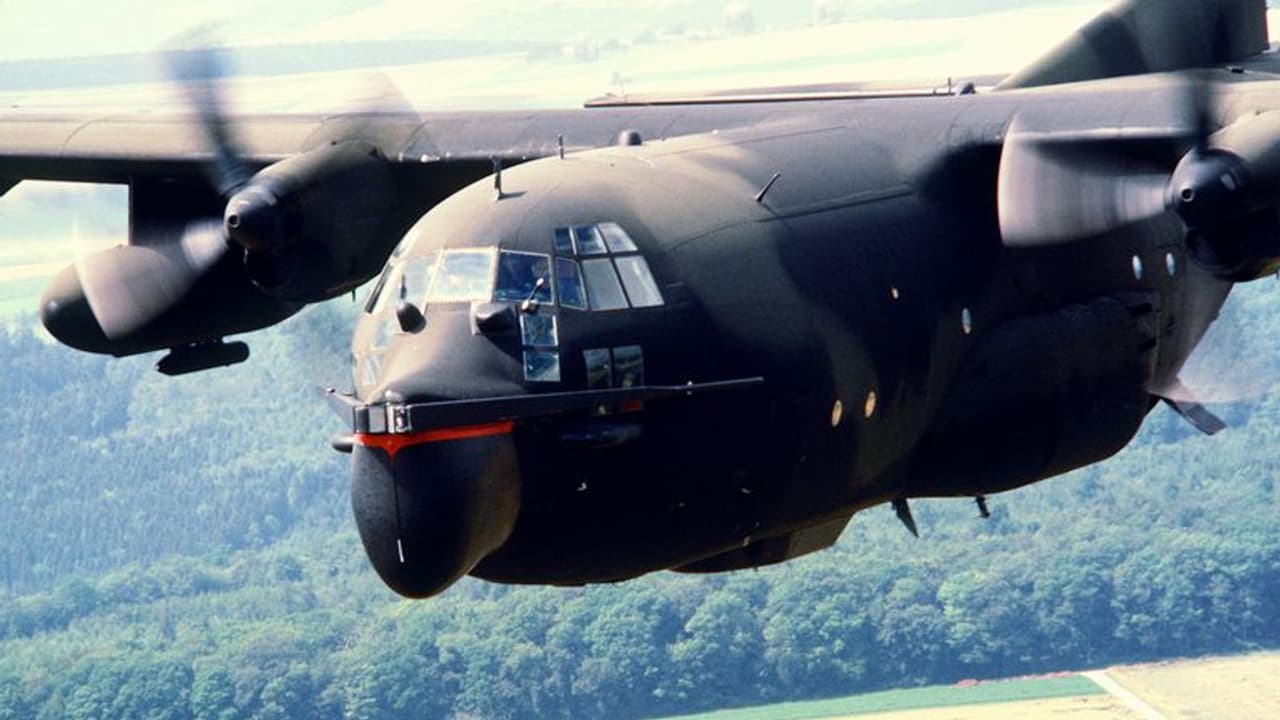From dropping troops behind enemy lines to killing terrorists, the aerial route has been the key to the success of special missions. We fly to the future of aviation and its use in Special Operations as we oversee its evolution and employment in major events
On May 2, 2011, a group of special operators from the top-secret US Joint Special Operations Command (JSOC) descended on an unassuming compound in Abbottabad, Pakistan. The members of SEAL Team Six shot and killed the infamous Al Qaeda leader Osama Bin Laden. Due to an accident during the operation, they had to leave behind evidence of the previously unknown stealthy UH-60 Black Hawk helicopter. Other than the long-awaited neutralisation of the dreaded terrorist leader, the incident also showcased the US military’s most secret aviators and their unique aircraft, many of which are silently evolving the path for special operations aviation’s future. On 3 January 2020, a United States drone strike near Baghdad International Airport targeted and killed Iranian Major General Qasem Soleimani of Iran’s Islamic Revolutionary Guard Corps (IRGC). Soleimani was commander of the Quds Force, which has been designated a terrorist organisation by many countries.

Also read: Domestic passenger flight operations are expected to commence from May 25
Special Force Evolve
The primary mission of the Special Forces (SF) is to conduct unconventional or clandestine guerrilla warfare behind enemy lines. These specialists could also help defend against hostile guerrillas in a counter-guerrilla role. SF operations are as old as war fighting itself and have played an important role throughout history, starting with reconnaissance, hit-and-run and sabotage operations. Chinese strategist Jiang Ziya in his Six Secret Teachings (475-221 BC) mentions recruiting talented and motivated men into specialised elite units. In the late Roman period, Roman fleets used small, fast, camouflaged ships crewed by selected men for scouting and commando missions. In Japan, Ninja warriors were used for reconnaissance, espionage and as assassins, bodyguards or fortress guards. The British Indian Army created the Corps of Guides in 1846 and the Gurkha Scouts in the 1890s for special roles. In 1940, the British Commandos were formed to unleash a reign of terror down the enemy coast in German occupied Europe. Most major Armies created SFs during WWII, and they served in all theatres.
Initial Aviation Support to SF
Advent of aviation made insertion of troops behind enemy lines so much easier and faster. It also helped extricate SF troops after a mission. SFs are inserted through physical landing at an airstrip with minimal facilities and aids, or Para-dropped behind enemy-lines. The airborne invasion of Crete Island in June 1942 and the Chindit operations of Burma Campaign are taught in military academies. The German army used SFs in many campaigns, including the famous Barbarossa campaign in 1941. Italians used SFs to sink and damage considerable British tonnage in the Mediterranean and raid allied airbases and railways in North Africa in 1943. Formally, the SF doctrines of unconventional warfare evolved after the Korean War in 1951. In modern times the SF troops saw major action in Vietnam, Kosovo, the Gulf war, Afghanistan and Iraq. Operation ‘Just Cause’ in late December 1989 involved an air invasion of the Republic of Panama using C-130 variants and MH-60 helicopters. Panamanian President Manuel Noriege was captured. SFs have been used in both wartime and peacetime military operations across the world. They nowadays perform airborne operations, counter-insurgency, counter-terrorism, covert ops, hostage rescue, high-value target hunting or neutralisation among others.
Special Air Operations
Air operations conducted in support of special operations and other clandestine covert and psychological activities are called Special Air Operations (SAO). During the late 1960s, the US was eager to get information on Chinese nuclear tests at Lop Nor. USAF flew a six-hour low level night mission from Thailand to paradrop sensor pallets in Gansu province. Since 2004, Pakistan and the USA have employed aircraft and helicopters on the Afghan border using airborne sensors to hunt and kill militants. Forward looking infrared systems, night vision capability, all-weather weapon aiming sights, self-protection systems to defend from airborne radars and air/ground fired weapons are key to special operations aircraft. All major Air Forces of the world have special operations aircraft. USA, because of global commitments, has a Special Operations Command, since 1990, which handles missions ranging from precision application of firepower, infiltration, exfiltration, and resupply and refuelling of special force’s operational elements. Its motto ‘Any Time Any Place’ says it all. Aircraft employed by the USA are indicative of the more suited types. These include Hercules C-130 variants, CV-22 Osprey tilt-rotor, MQ-1 Predator and MQ-9 Reaper Unmanned Aerial Vehicles (UAV) and many smaller ones among others. For special one-off missions, other aircraft including helicopters are inducted. Other missions include Combat Search and Rescue (CSAR), airbase ground defence, air interdiction, special reconnaissance, psychological operations, radar assault/bursting, establishing assault airfields, air fire support etc. After 9/11 attacks on the World Trade Centre, anti-plane hijacking, and anti-kidnapping are also special missions.
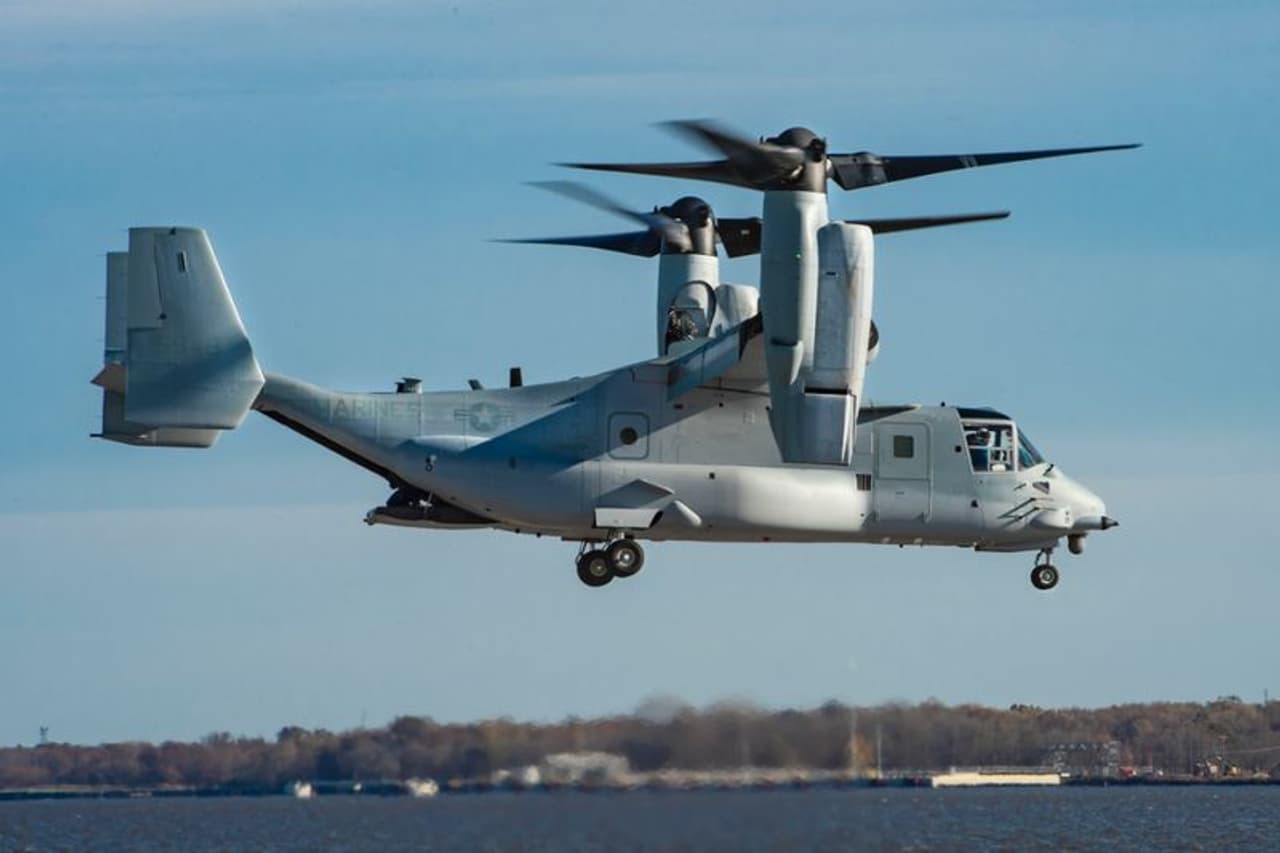
Bell Boeing V-22. Picture Credit: intelligent-aerospace.com
Air Elements Lead the Way
Special operations require specially designed aircraft, helicopters or UAVs with better capability to penetrate behind enemy lines, and special training for aircrew, tactical air control party, para-rescue medical teams, special weather teams for behind-the-lines meteorology, and assets protection security teams. Air elements normally lead the way for other forces. Para rescue teams and troop extrication are also air tasks. Air Forces are also responsible for para training including for High Altitude Low Opening (HALO) and High Altitude High Opening (HAHO) parachute operations.
Special Operations Aircraft
Strategic cargo and transport aircraft have given global reach at short notice. Helicopters can put the troops on the roof top and UAVs undertake a variety of roles. Also, capability to penetrate undetected and land at short unprepared airstrips has allowed a variety of special missions. Changing nature of war has given primacy to Special Operations aircraft. The most commonly used aircraft the world over are the Lockheed C-130 Hercules variants. These are specially configured with electronic warfare suits for deception and self-protection. They also carry significant integral fire power. Short landing and take-off ability on semi-prepared surfaces allow quicker insertion and exit. A440M, IL-76, C-47T Sky Train, C-212 Aviocar, and CN-235-100 also have special ops roles. The Bell-Boeing V-22 Osprey multi-mission tiltrotor aircraft with both vertical take-off and landing, and short take-off and landing capabilities is very well suited for such operations. Russians use Antonov AN-26. UAVs of MQ-1 Predator class and much smaller other UAVs have different support and combat roles. Mi-8/Mi-17 helicopters are extensively used. Boeing Chinook CH-47 is also used. Special navigation and aerial delivery systems are used to locate small drop zones and deliver people or equipment with greater accuracy and at higher airspeeds. Terrain following, and terrain-avoidance radars, precision-ground-mapping radar, automatic-computed-air-release-point system, electronic and infrared countermeasures, high-speed-low-level aerial-delivery system, container release system, secure HF, UHF, VHF-FM and SATCOM radios, Forward Looking Infrared (FLIR), are important equipment.
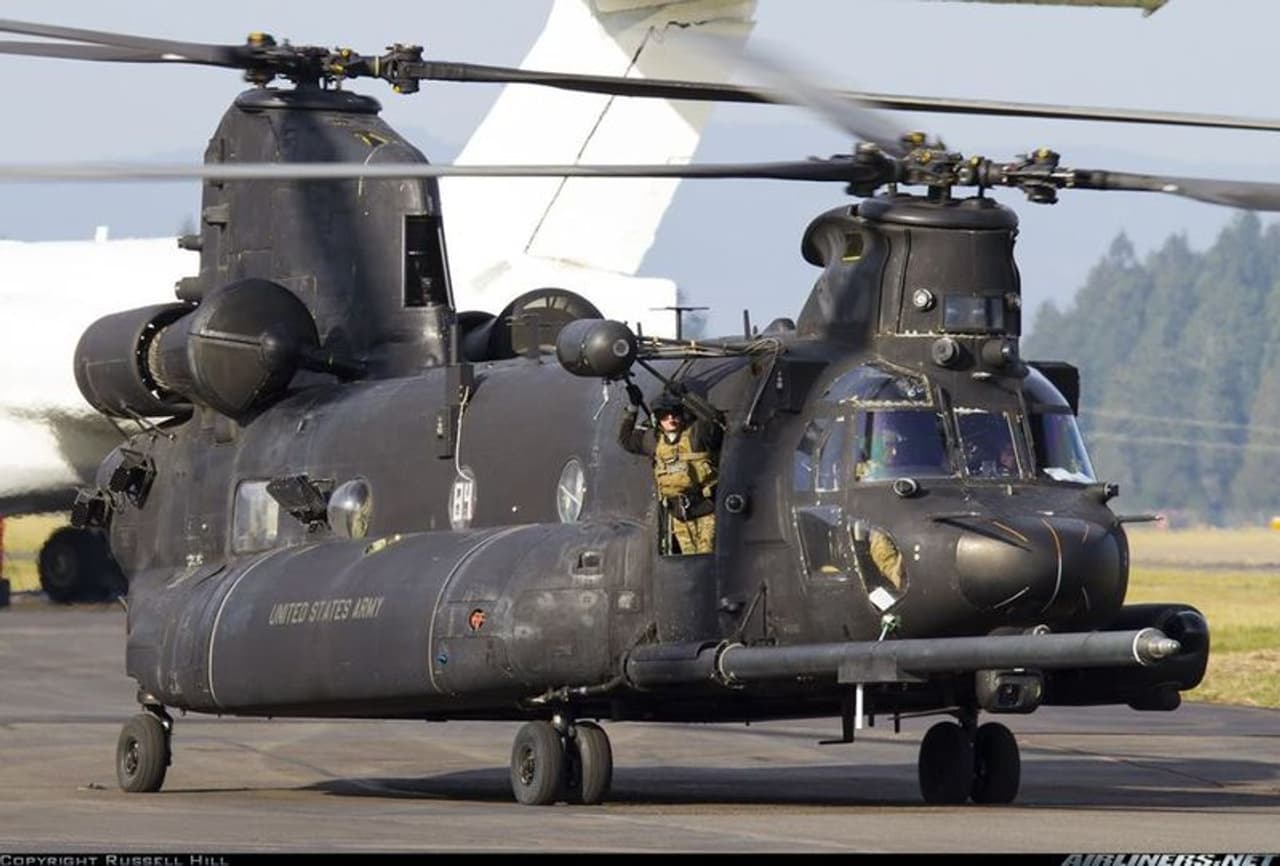
US Special Operations Chinook. Picture Credit: Pinterest
The Mission
Missions are normally flown at night as during day operations aircraft are more vulnerable to anti-aircraft artillery, surface-to-air missiles, and some IR man-portable systems. Enemy territory stretch is normally flown at ultra-low level. C-130 Gunship modified with side mounted guns can also provide sustained and surgically precise firepower. Pre-emptive jamming or SEAD (suppression of enemy air defences) is required. Mission can also have air defence escorts, combat air patrol for LZ/DZ security, and fire support for helicopter operations. Fighters can be part of the package and provide additional strike capability with greater standoff, hard-target kill capability, and larger area suppression weapons.
Major Airborne Special Ops
The first true special operations sortie took place Dec. 24, 1942, when two C-47 transports dropped paratroopers behind German lines to blow up the El Djem Bridge in Tunisia. The famous ‘Carpetbaggers’ used B-24 Liberators to drop agents behind enemy lines. Operation ‘Thunderbolt’ on 04 July 1976 was a classic counter-terror hostage-rescue mission carried out by commandos of the Israeli Defense Forces (IDF) at Entebbe airport in Uganda to rescue 248 passengers held hostage by a Palestine liberation group. Four Israeli Air Force C-130s flew low-level at mid-night to avoid radar and visual detection. On 24 April 1980, US President Jimmy Carter ordered, Operation ‘Eagle Claw’ during the Iran Hostage crisis to rescue 52 diplomats held captive in Tehran. The eight-helicopter operation encountered many operational and maintenance obstacles and was eventually aborted causing serious embarrassment to President Carter. This led to a complete relook and the development of Osprey V-22 tilt-rotor. Soviet SFs were used during the war in Afghanistan including storming of the palace and killing of President Hafizullah Amin and over one hundred of his guards.
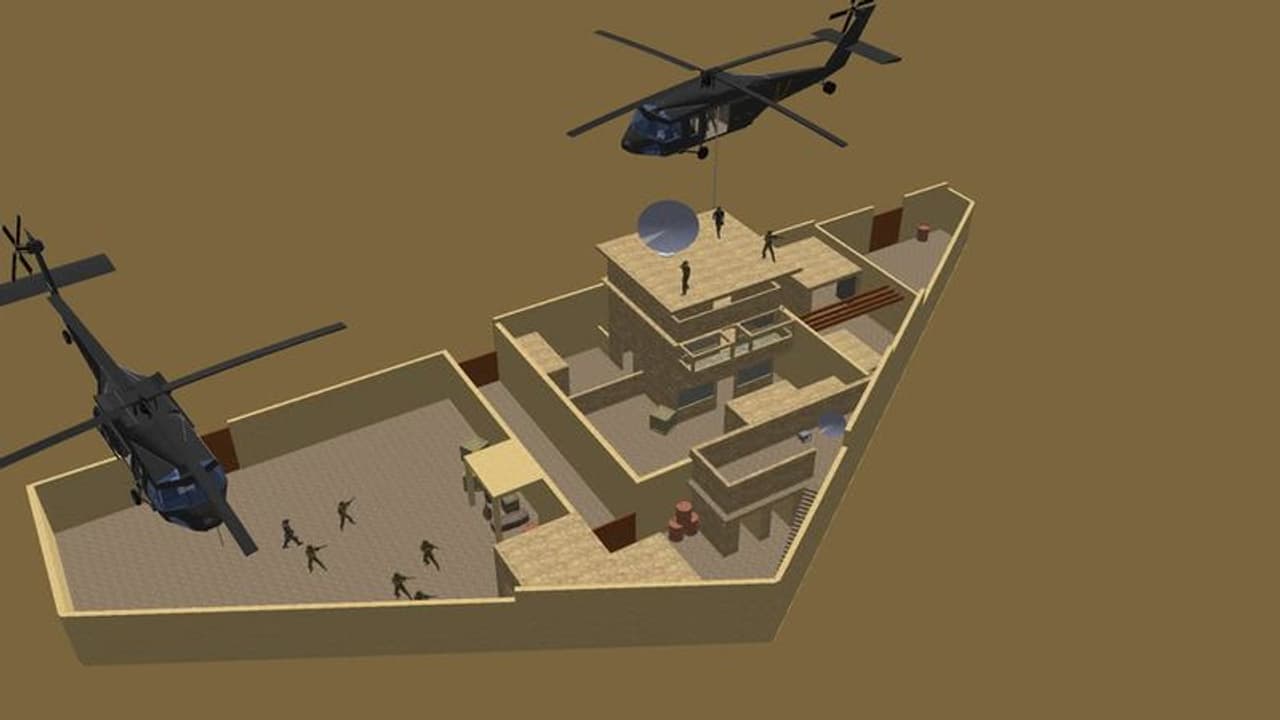
Operation Neptune Spear. Picture Credit: 3dwarehouse.sketchup.com
Al-Qaeda leader Osama Bin Laden was killed in Pakistan on 2 May 2011 by US Navy SEALS in operation Neptune Spear. 79 Commandos and a dog were involved. Two modified stealth Black Hawk helicopters were used. Much larger Chinook helicopters were on hot stand-by. Helicopters were supported by multiple other aircraft, including fixed-wing fighter jets and drones. Since, finally one Black Hawk had to make an emergency landing, one of the two Chinooks held in reserve was dispatched to carry part of the team and Bin Laden’s body out of Pakistan. The Bell-Boeing MV-22 was used to fly the body of Osama bin Laden to aircraft carrier Carl Vinson for his sea burial. MV-22 had its first offensive combat mission in Afghanistan in December 2009 in Operation Cobra’s Anger. Ospreys assisted in inserting 1,000 Marines and 150 Afghan troops into the Now Zad Valley in southern Afghanistan to disrupt Taliban communication and supply lines. Born of a failed 1980 helicopter raid to rescue American hostages in Iran, US Special Operations Command (SOCOM) was established in 1987, and today has nearly 70,000 troops. 85% of SOCOM troops are deployed in 20 countries around the Middle East and are regularly conducting kill/capture missions in Afghanistan, Iraq, Pakistan, and Yemen.
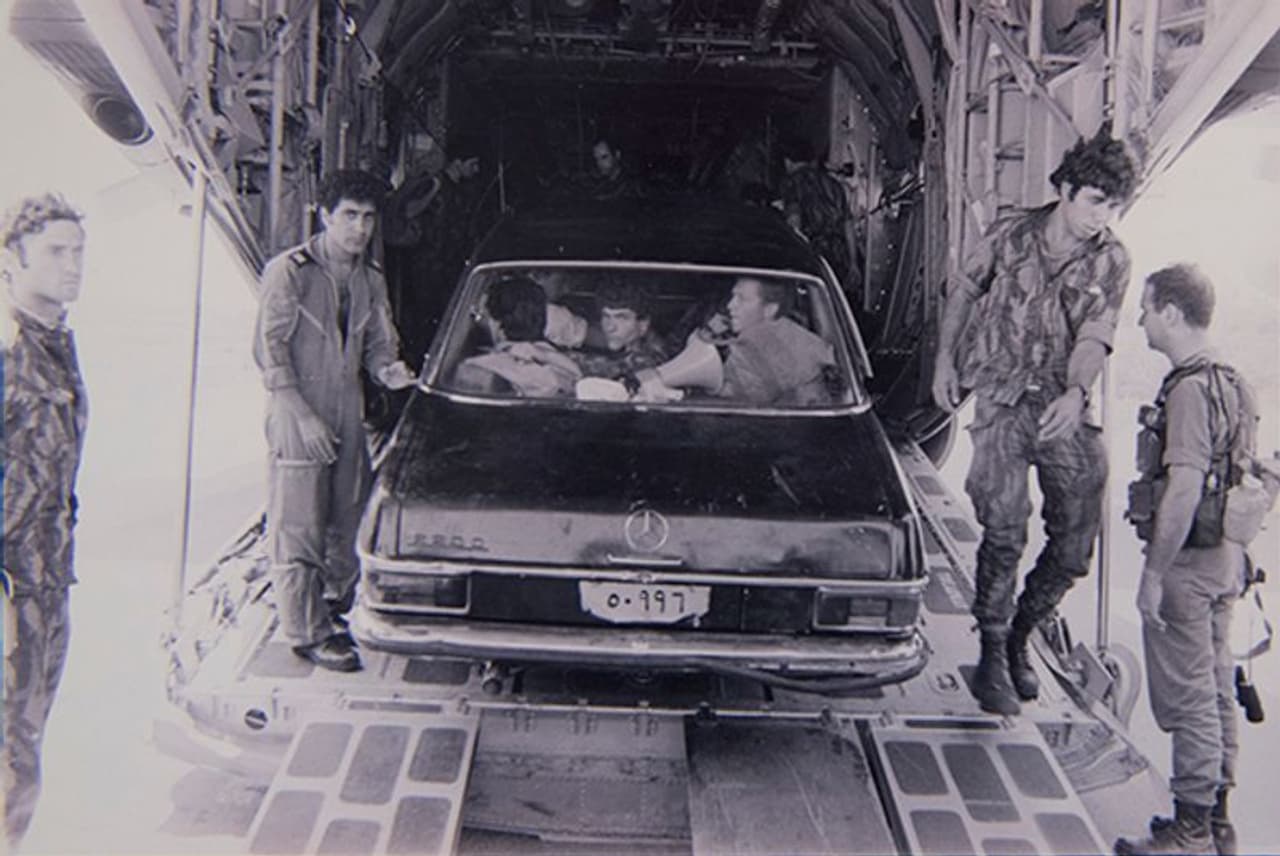
Entebbe Operation Thunderbolt. Picture Credit: Wikipedia
Special Forces of India
Indian Army has eight Para Regiments that constitute SFs. They are tasked for direct action, hostage rescue, counterterrorism, unconventional warfare, special reconnaissance, foreign internal defence, counter-proliferation, counter-insurgency, seek and destroy and personnel recovery. Formed in 1941 they have been engaged in various ops since 1948. They work closely with the Para training units of IAF. During 1971 war Indian SFs carried out the first airborne assault operation to capture Poongli Bridge in Mymensingh near Dhaka, Bangladesh. The Tangail Airdrop was a successful battalion size airborne forces paradrop operation mounted on 11 December 1971 by the 2nd Battalion (Special Operations) (2 PARA) of the Indian Army’s Parachute Regiment during the Indo-Pakistan War of 1971. The operation involved An-12, C-119s, Caribous and Dakotas of the IAF. Para (SF) were the first to lead a heli-borne assault on 11 October 1987 in Jaffna, and later Moolai in Sri Lanka during IPKF operations. On 4 November 1988 an Army parachute brigade carried out airborne/air transported Operation Cactus to liberate Maldives during a Coup attempt. A fleet of IL-76, An-32 and An-12 transport aircraft were used. The Indian Air Force and 21 para (SF) carried a cross-border operation along the Indo-Myanmar border and destroyed two militant camps in 2015. Eleven days after the Pakistani terror attack on Uri brigade of Indian Army, on 29 September 2016, Indian Army’s 70-80 soldiers of 4 and 9 Para carried out surgical strikes on militants staging areas across the LoC in Kupwara and Poonch districts. The special forces teams travelled 1–3 km on foot and destroyed terrorist bases with hand-held grenades and 84 mm rocket launchers. Indian SFs have done training with SFs of USA, Bangladesh, Israel, UK, France, Russia, Mongolia, Kazakhstan, Uzbekistan, Myanmar, Nepal, Maldives, Seychelles, Singapore, Indonesia and Thailand.
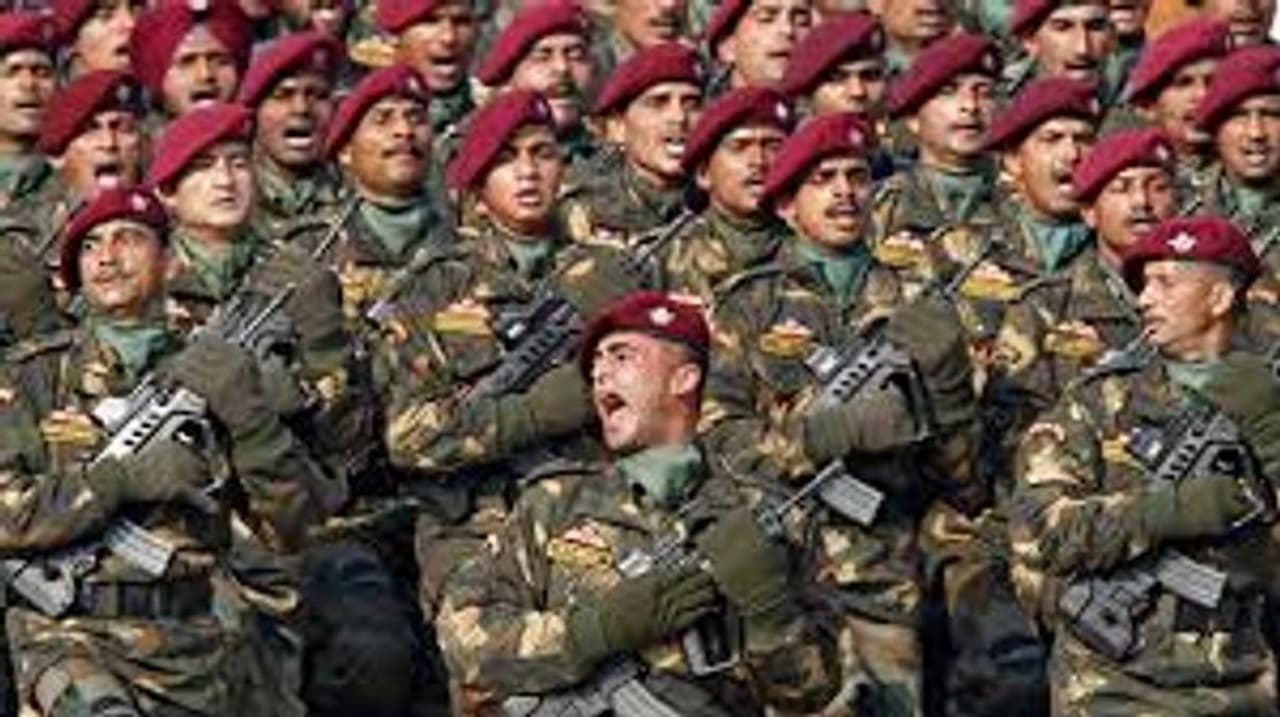
Army Para Commandos Picture Credit: Facebook
IAF ‘Garud’ are a special force of around 1,080 specially trained commandos formed in 2003. They work closely with the Army and Naval commandos. Their additional roles include airfield seizure, airborne operations, air assault, radar bursting, capture and operation of an enemy airbase, air base ground defence, air interdiction, close air support, psychological operations, wartime disaster management, mass casualty evacuation, VIP evacuation, nuclear contingencies and CSAR. After the Pathankot airbase attack in January 2016, 700 additional have been cleared to make it 1780. Garuds have been deployed to Congo as a part of the UN peacekeeping contingent. Formed in 1987, MARCOS are the special forces of Indian Navy. Their additional roles include amphibious warfare and hydrographic reconnaissance. MARCOS stormed the Trident and Taj Hotels at Mumbai during the terrorist attacks on 26 November 2008.
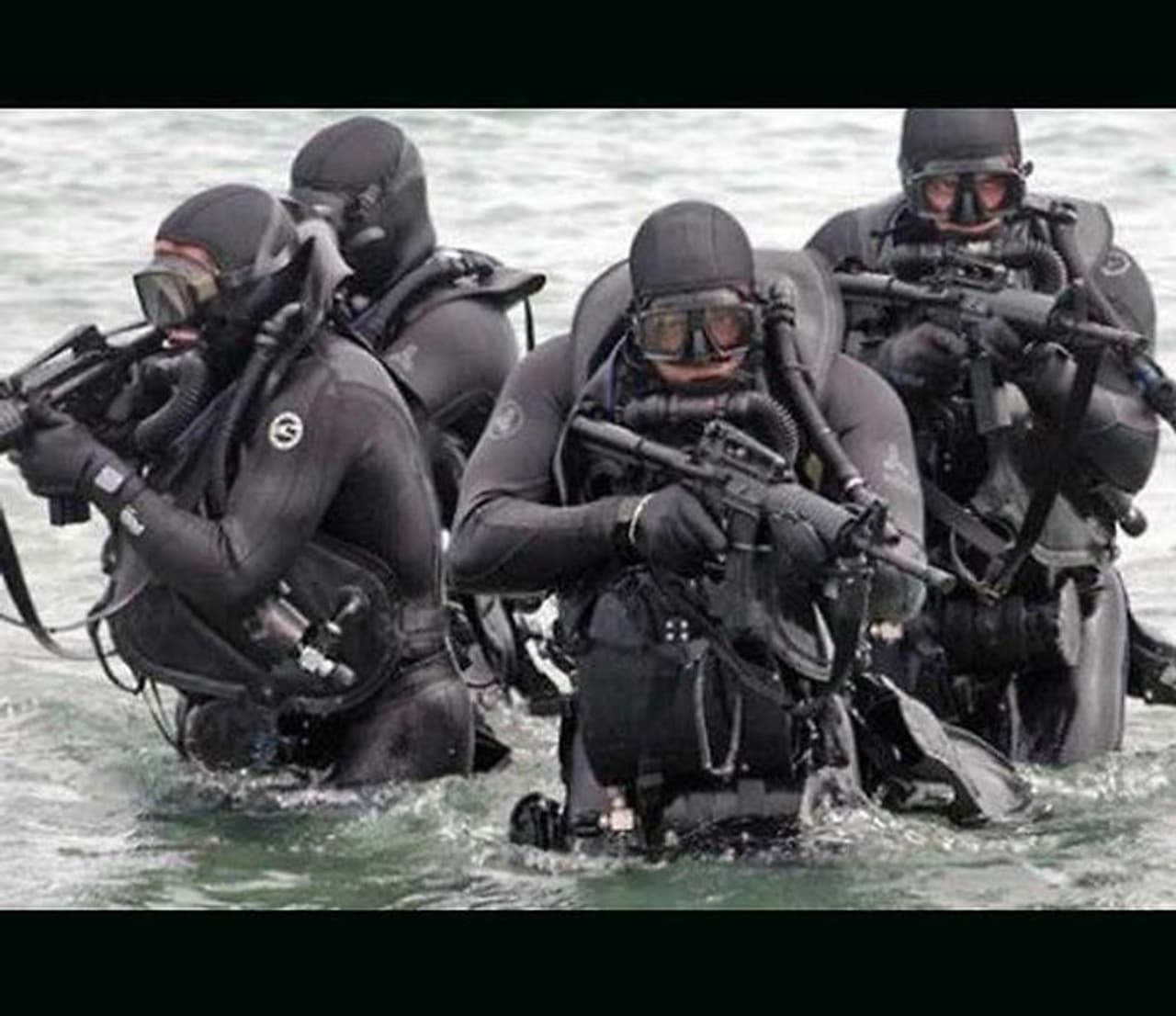
Marcos. Picture Credit: Daily Bhaskar
Armed Forces Special Operations Division (AFSOD)
The Armed Forces Special Operations Division (AFSOD) is a tri-service command of the Indian Armed Forces. The division is tasked to carry out special operations. The AFSOD draws personnel from all three special warfare branches of the Armed Forces. The creation of the AFSOD was approved by Prime Minister Narendra Modi and announced during the Combined Commanders’ Conference at Jodhpur on 28 September 2018. The division is expected to have around 3,000 soldiers initially. Indian Army’s Maj Gen AK Dhingra from the Para SF was appointed in May 2019 as the first head of the AFSOD. The division is expected to be converted into a full-sized tri-service command in future.
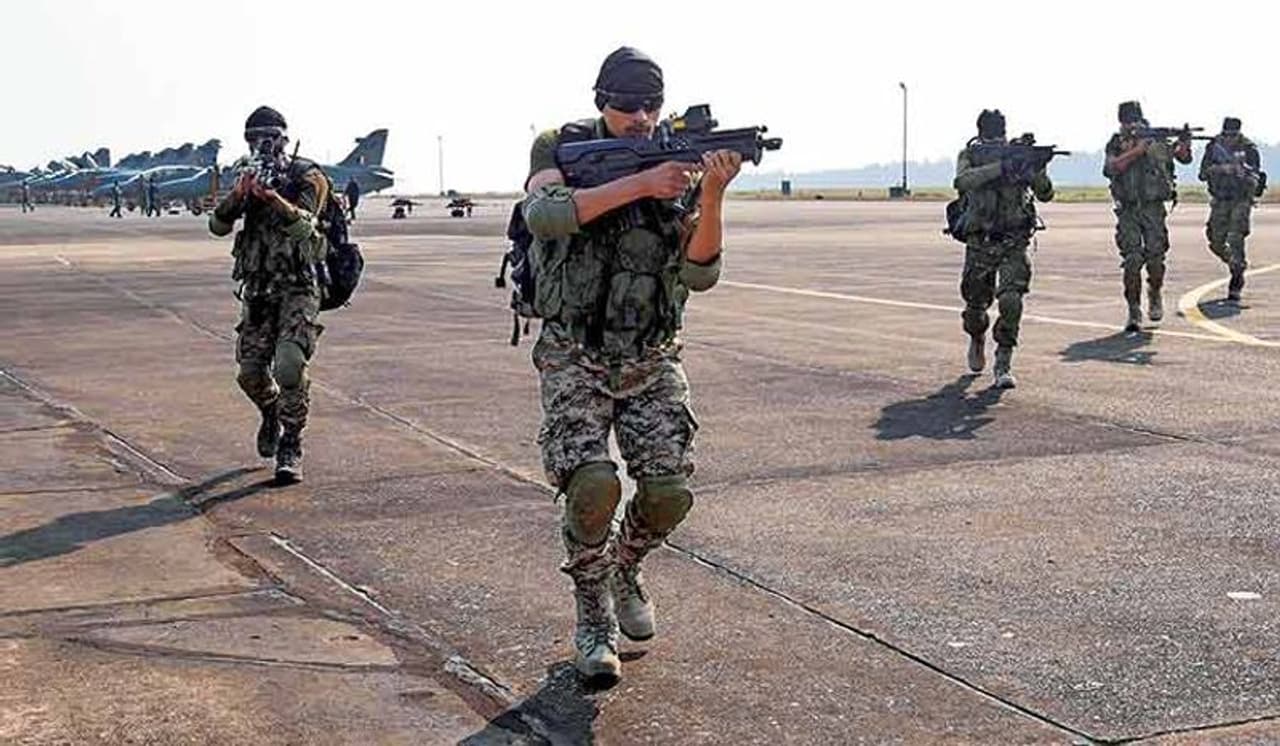
IAF Garud. Picture Credit: The Week
The division concluded its first exercise, code named ‘Smelling Field’, on 28 September 2019. The exercise was carried out in the district of Kutch, Gujarat. The exercise was meant to help in ironing out, and subsequently addressing the challenges faced by the division. A second exercise, code named ‘DANX-2019’, was held in the Andaman and Nicobar Islands. On 24th November 2019, the AFSOD was operationally deployed for the first time in Jammu and Kashmir to conduct counter-insurgency operations in the region. The division will be given operational control of transport aircraft, specialised weapon systems and surveillance equipment, initially on as required basis.
IAF’s Special Operations Aircraft
IAF’s An-32 fleet of over 100 aircraft also has bombing and special mission roles. On 04 Jun 1987, five An-32s escorted by four Mirage 2000s undertook food supply drop mission “Poomalai” over Jaffna peninsula. IAF has 12 C-130J-30s for special operations. The C-130J can accommodate loads up to 33 tons of the kind of three armoured personnel carriers, 92 equipped combat troops or 64 para troops. The aircraft has an electro-optical missile warning system, a radar warning receiver, and a countermeasures system that is capable of dispensing chaff and infra-red flares in addition to the GEN-X active expendable decoys. These allow safe penetration behind enemy lines. IAF routinely trains all SFs at the para training school at Agra and during exercises. The helicopter fleet includes three Mil Mi-26 heavy lift, and 15 Boeing CH-47 Chinook heavy lift helicopters. 22 Apache AH-64E attack helicopters are under induction. There are over 240 Mi-8/Mi-17 class medium-utility helicopters. Between the three armed forces there are nearly 250 HAL Dhruv and Rudra helicopters, all of which can be used for some form of special ops.
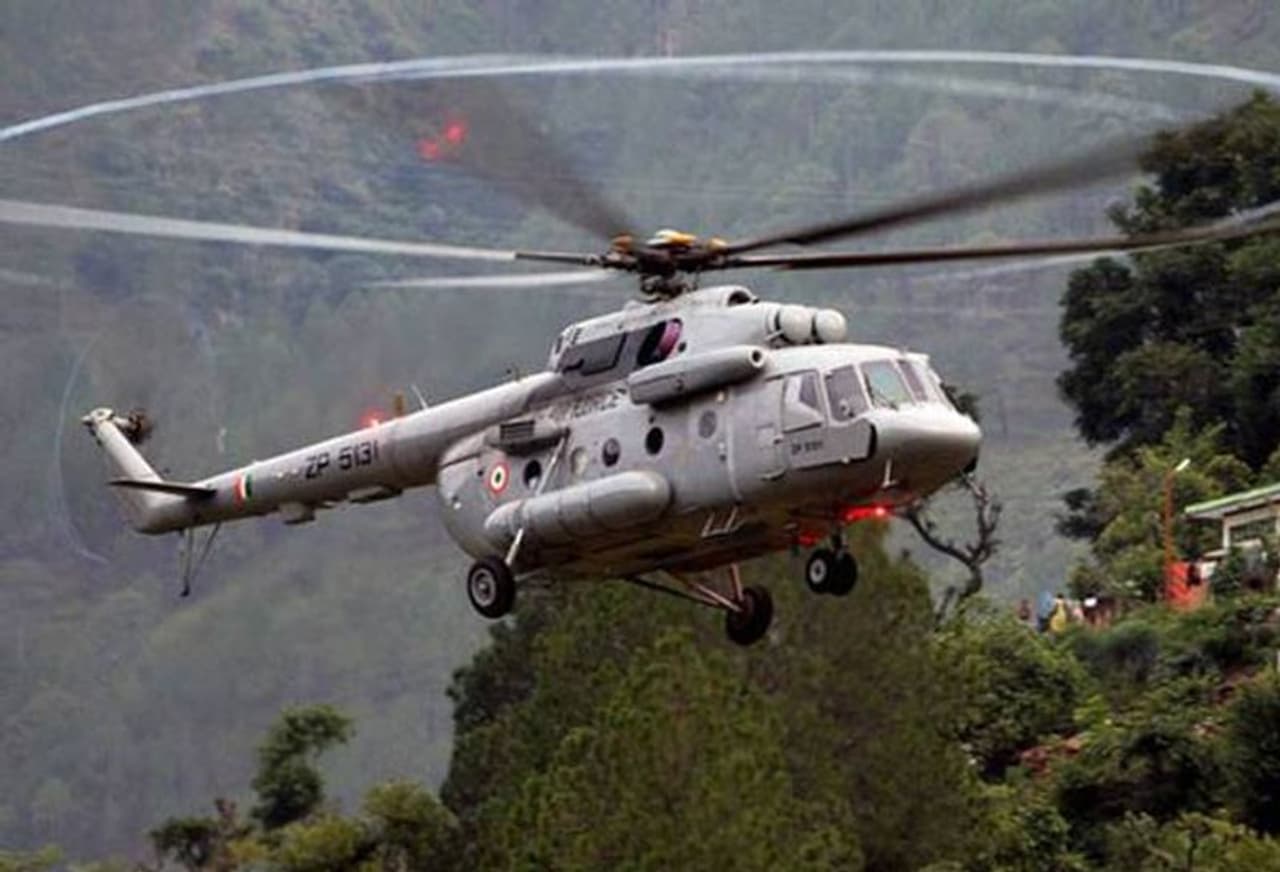
IAF Mi-17 Picture Credit: Business Today
Future
China’s indigenous Y-20 ‘large’ transport aircraft will have a payload of 66 tons. The Bell Boeing V-22 Osprey has advantages of a helicopter, and long-range, high-speed cruise performance of a turboprop aircraft. V-22 is replacing the Boeing Vertol CH-46 Sea Knights in the US Marine Corps. With capability to carry up to 32 troops or 9.0 ton cargo, makes it a good special operations aircraft. Israel, Japan and UAE are serious customers. This is an aircraft that may interest India one day. 56 EADS CASA C-295 twin engine tactical military transport aircraft are planned to replace IAF’s Avro aircraft. It has a capacity for 71 troops, 48 paratroops, 27 stretchers, or three light vehicles. Contract is still to be signed. India has also been considering procurement of 15 Japanese amphibious aircraft ‘US-2’. The ShinMaywa Industries developed amphibious flying boat has a short take-off (280 m) and landing (330 m) performance over water and could land at high sea states. It can also operate on land from runways as small as 1.3 km long. India continues to be a part of highly threatened regions of the world. Special operations would remain the key to India’s defence. India is rightly building its Special Forces and air transportation capability. In the not so far future India should have its Special Forces Command.
This Article was written for Defence and Security Alert (DSA) and has since been updated
(Air Marshal Anil Chopra, (Retd), is an IAF test pilot, who commanded a Mirage 2000 Squadron and operational airbases in both Western and Eastern sectors. He is also the founder of Air Power Asia)
